The following was written by my friend Angela Cancilla Herschel about her trip to Seram in 2005 where she volunteered with Kembali Bebas. I’ve copied it completely as she wrote it (with her permission of course). She was also kind enough to provide the photos.
******************************************************************************************************************
October 30th, 2005
I should sleep but I must write of this life changing experience … OK so where do I begin, and with my internal clock 16 hours ahead of Los Angeles time – some serious jet lag!
Seram island, which is also called “Nusa Ina or Mother Island”, I learned that it is the only home of the Seram ( Moluccan) cockatoo, and that no other cockatoos are on this island. The island is the ancestral homeland of the pink cockatoo and is an unbelievably gorgeous mountainous rainforest island.
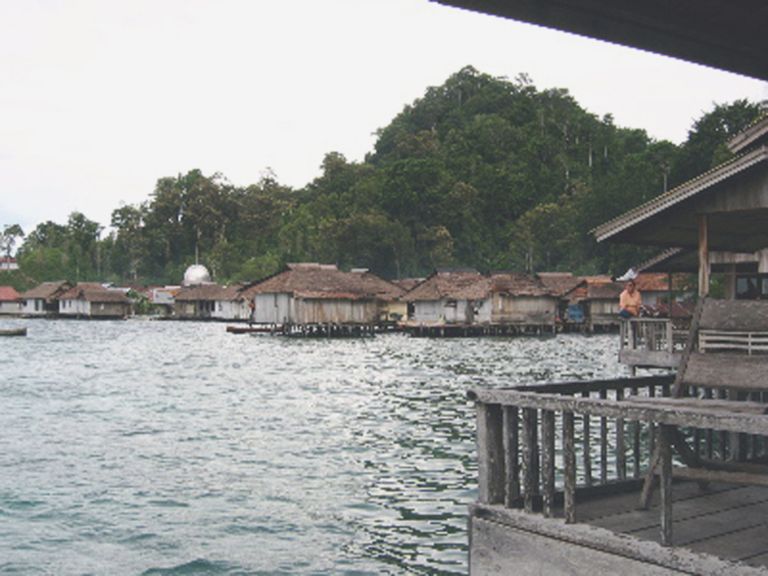
Sawai Village
Prior to my trip with Indonesian Parrot Project, when I had the pleasure of visiting the Tambopata Macaw Project in southeastern Peru. There with Dr. Don Brightsmith I learned that when releasing hand fed babies ( from second laid chicks who would have not survived) . The success rate was very successful when releasing them all together instead of one or a few at a time. Groups make a big difference. The chicks in Tambopata were never caged and always together and started fledging and would come back for feedings on their own while fledging. Years later all lived but one and have mates of their own and many are wild mates ..
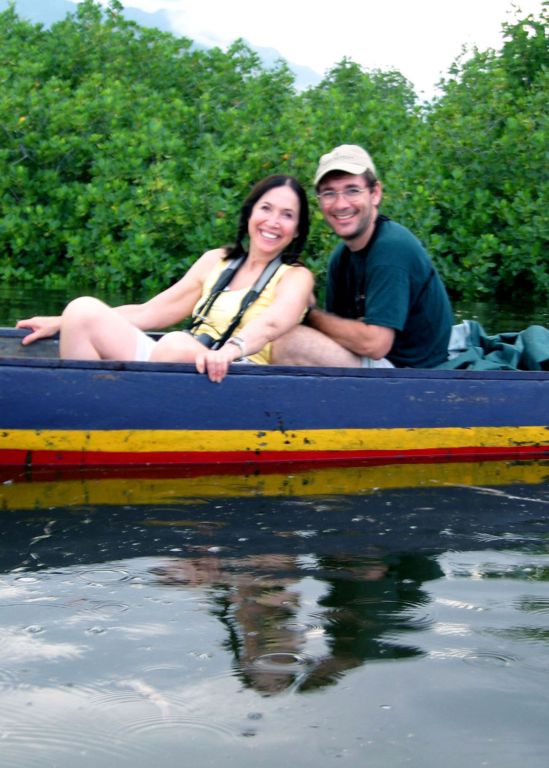
Angela & Don Brightsmith Boat Seram Island (Photo by Mandy Andrea)
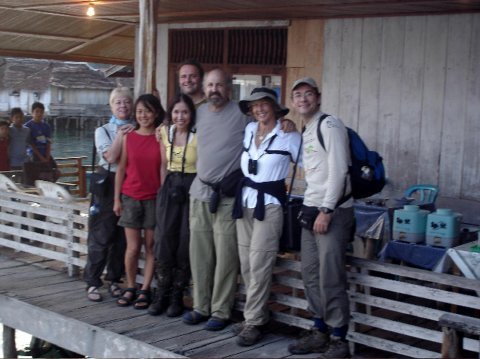
Team Bonnie Mandy Angela Andrew Stew Lorraine Don
In Seram Indonesia, the birds at Kembali Bebas ( Indonesian for Return to Freedom ) Rehabilitation Center are cared for until perhaps someday a carefully selected few will meet the rigid criteria so that they can be released back into the rainforest once more. Others will be maintained in permanent Sanctuary in a natural forest setting to teach conservation to the local villagers and school children. Prior to the collaboration of Project Bird Watch, Yayasan Wallacea and the Officers of Manusela National Park on Seram, they used to confiscate poached birds and just release some of them directly, (but only birds that were not on CITES I) so it was mostly the small lorikeets which is called a “hard” release. Indonesian Parrot Project does not support or suggest that hard release is a good idea for most species.
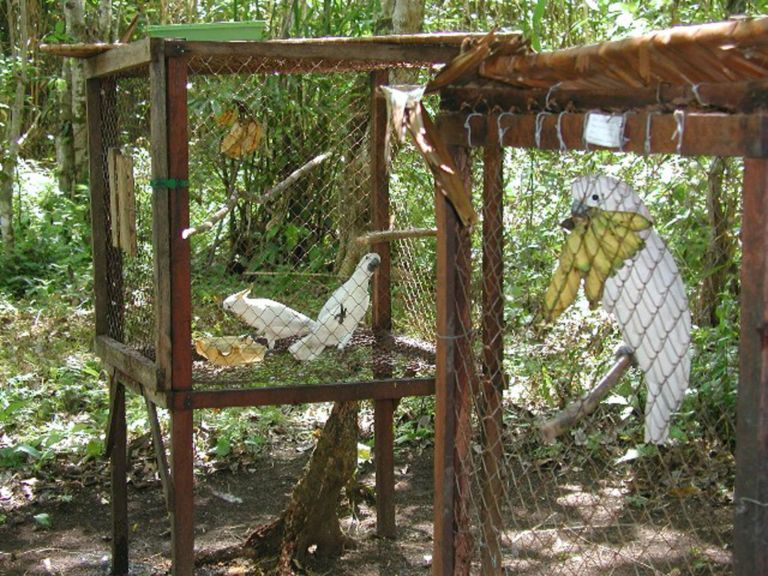
Kambali Bebas Rehab
According to Dr. Donald Brightsmith, a group release usually is more successful. At Kembali Bebas Rehabilitation Center all the birds are tested for occult transmissible diseases. Project Bird Watch insists that such tests results must be “clean” before any bird is released. To date no birds have been released.
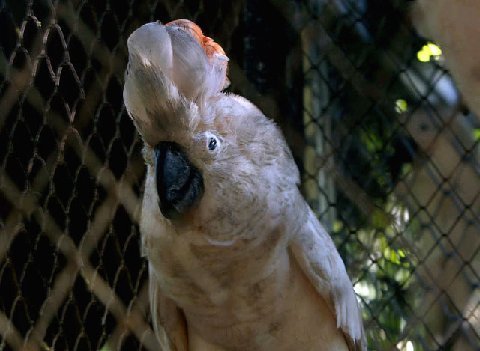
Cockatoo Seram Sick Kambali Bebas
How I can remember those birds still at Kembali Bebas… their faces and stories haunt me every day. For example, a very scared (and young) Palm cockatoo who had been trapped and then put in a small cage which was placed in a boat next to the engine. Between the horrible noise and heat he was so frightened. We placed a palm leaf blind over a side of his enclosure for so he could have his corner for privacy and peace.
And then there were the black capped lories who (when ready) might be returned to the area to which they are endemic (the West Papuan islands of Raja Ampat). …Oh what hysterical clowns they are, everyone fell in love with them …they are an absolute riot … rolling around on the floor of their enclosure with each other they are a hilarious! I also saw the most gorgeous Grand Eclectus I have ever seen endemic to Seram island at Kembali Bebas.
I learned that rainforest birds on Seram do not ever naturally go on the ground (even drinking water in trees) and the ex – trappers told me only sick ones would go on the ground. Birds that come from Aru in arid dry areas are more grain/grass seed eaters and thus do go on the ground and are an exception to this. Palm cockatoos in the Northern tip of Australia are another exception.
The birds at Pusat Penyelamatan Satwa (PPS)- Bali (the Wild Animal Rescue Center in Bali), are eventually taken to Kembali Bebas They are fed well with fresh papaya, “kenari nuts (the fruits of the Canarium indicum tree, which PBW now sells in the U.S. as ‘MoluccaNuts)’and other fruits in the AM and again in the early PM. The birds are fed a great deal of natural forest foods that are gathered every day by the staff. It was so heartwarming and fun sharing our knowledge of birds with the staff at the rehabilitation center. Once trappers themselves they understood many things about the birds, but didn’t really know that parrots needed lots of leaves from banana-, palm-, and ginger trees and safe tree branches to play and chew up to keep their intelligent minds busy.
A factor to take into consideration is that a bird once captured and confined might begin picking it’s feathers…and said this strange behavior is mystifying to the local ex-trappers. We worked directly with the staff to put lots of things in the cages for the birds to play with and to chew in the enclosures to help keep these intelligent minds busy ( especially the poor new quarantined ones). We taught them how very smart birds are and that if they themselves were locked up in a jail they might start pulling their own hair out…..LOL!
When visiting the canopy platform at Masihulan it was astounding. We were literally up in the clouds in the giant tall Masilhulan ironwood tree canopy (trees grow incredibly huge here.. !) …we saw Great bills and Grand Eclectus and lories flying by us. Such wonderful and great flyers they are.
But nothing prepared me for when I finally saw my first wild Seram Cockatoo at last… is was a moment I will never forget. They have this unique flying pattern.. flap.. flap..glide,.
flap..flap…glide.
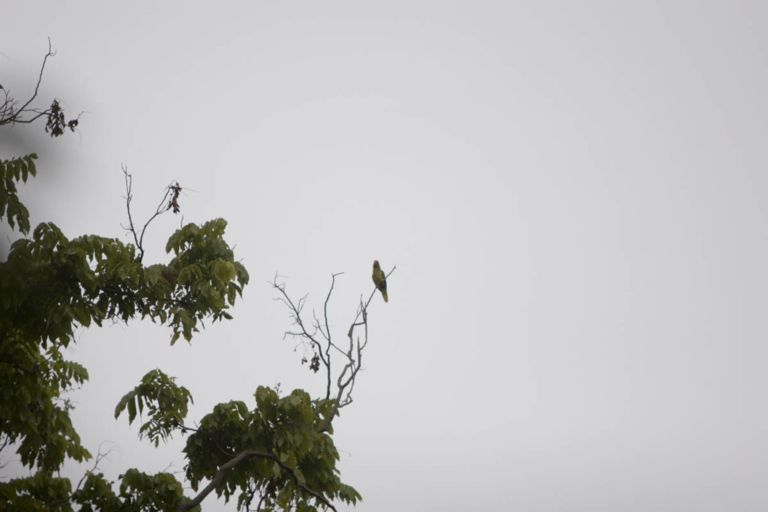
Wild Moluccan Cockatoos
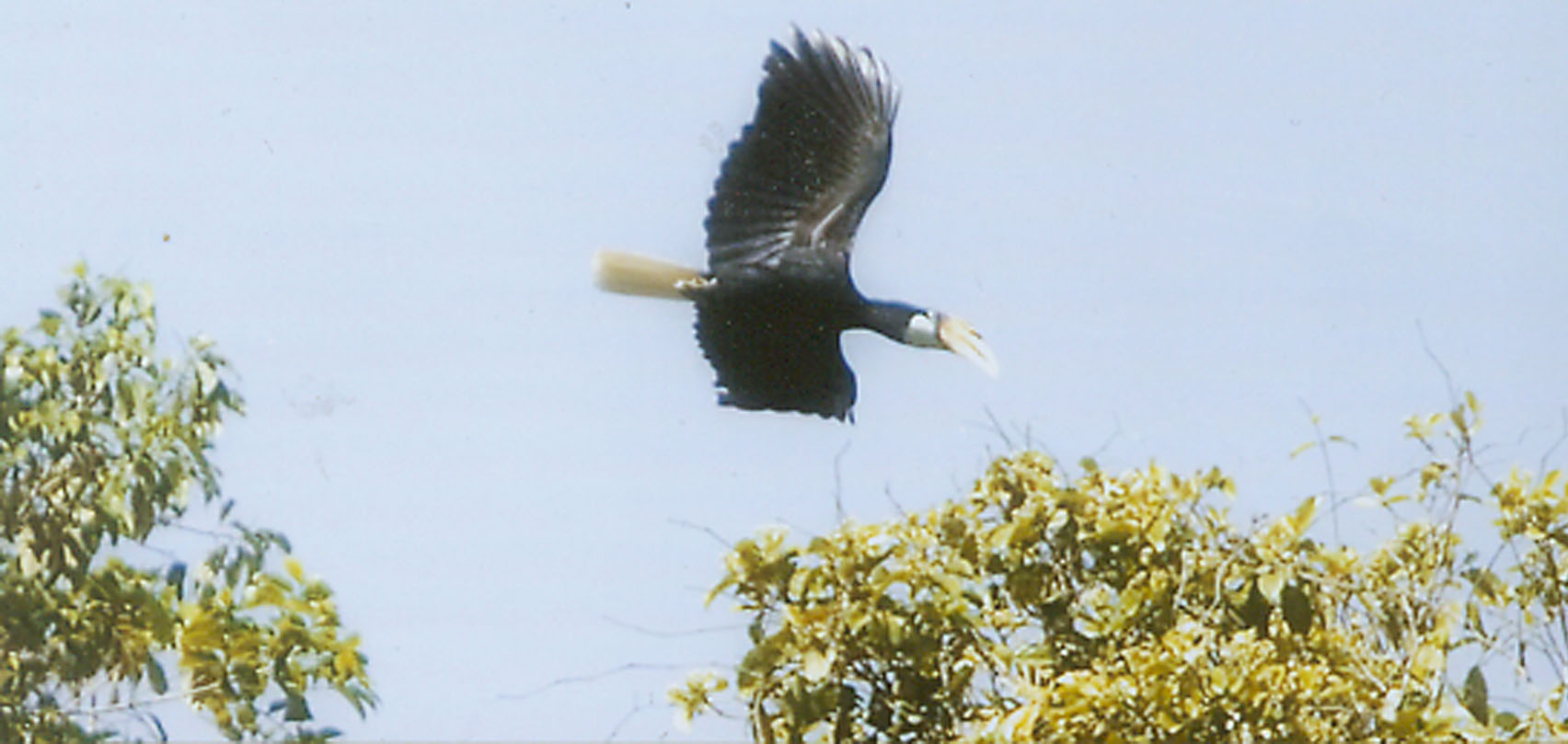
Blyths Hornbill Flying Overhead On Seram Island
While I was in tears watching the Seram cockatoo …. all of a sudden a two huge Blythes hornbills flew right over my head and the drumming sound from their huge wing beats was so loud it was incredible!
Indonesian Parrot Project with partial funding from Seacology) built two medical clinics with non polluting solar powered generator systems for power and clean water, in 370 Hectare rainforest Heritage zone on Seram which will be available for future generations. And PBW soon will be distributing a coloring book with drawings of a Seram cockatoo “talking” and teaching to the children all about hygiene. Alas no one knows very much about hygiene and germs and I observed from the community spring a hanging drinking cup that everyone in the village shared.
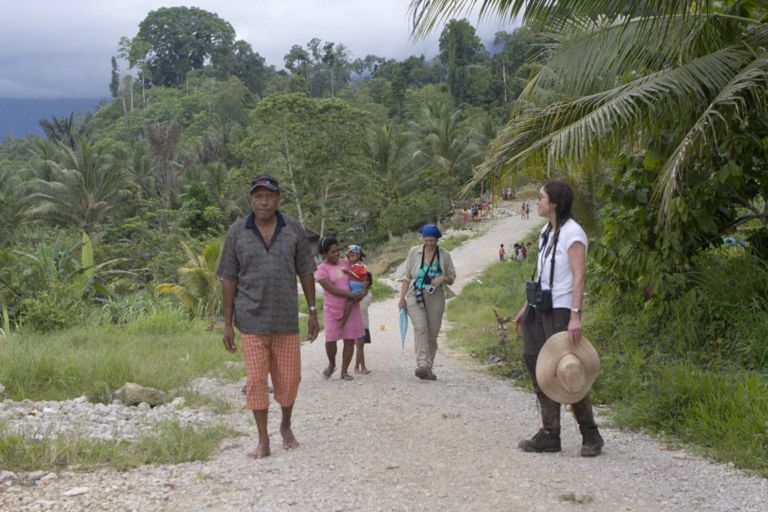
Masihulani Chief with Angela And Hat
The people are wonderful…and the day before we were to leave the villages of Sawai, and Masihulan we gave farewell gifts for the l children. It was painfully obvious that only a few were teenagers….. so many just never make it past their very early years. Hopefully, this will change with the new clinics.
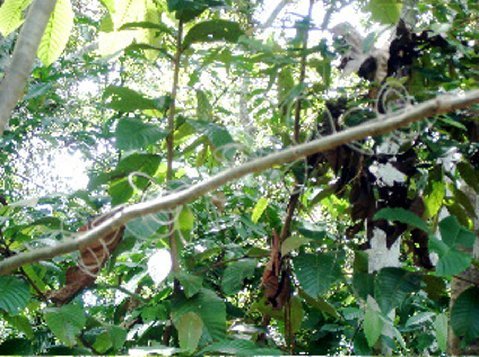
Trapping Shows Traps Of Fishing Line On Branch
Helping teach the people that animals are indeed sentient and intelligent beings ( a concept new and not fully understood before) was to me my greatest joy of all …and .. to see the “light go off “ in their heads ….was magic!
Indonesian Parrot Project is everything I thought it was and much more …. giving hope to indigenous peoples and providing an income they never before had , and so much more than smuggling birds ever would give…. if there is only one organization you want to help … think Project Bird Watch….think of the dirty smuggled confiscated birds found stuck in PVC pipes , some with broken wings , saved because of IPP .. now at Kembali Bebas … waiting for some time in the future when they might be freed and returned to their rainforest homes . They are the faces who forever haunt me….and why I will always be there to help IPP in their work to save them!
IPP even has educated them so well that some of the guards at one of the Entry Gates to Manusela National Forest were wearing T-shirts they had made up all by themselves and the T-shirts had cockatoos on them that said in Indonesian ” Better in the wild”……and seeing those made our hearts sing.
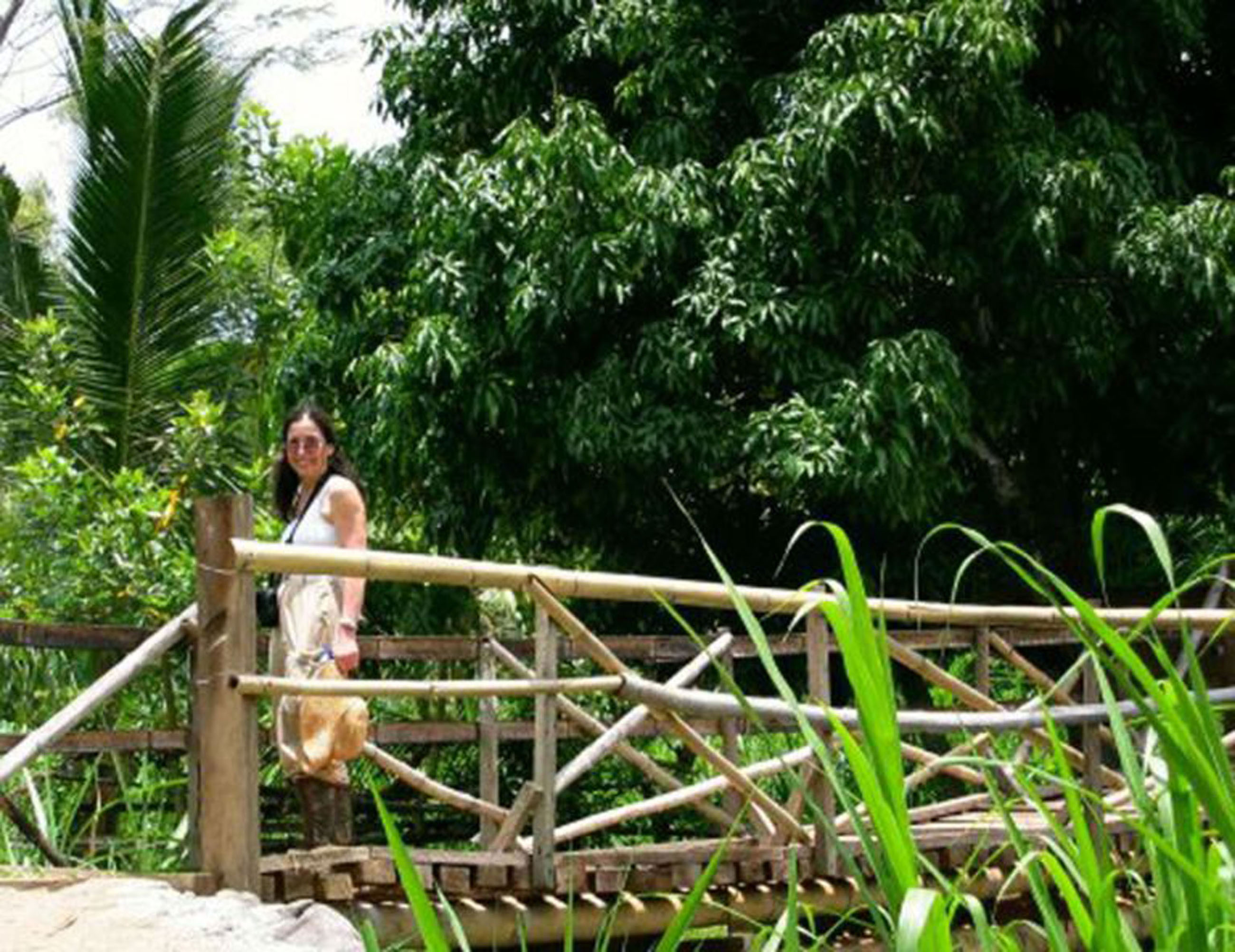
Angela Bali Bridge
*******************************************************************************************************************
I hope everyone has enjoyed reading Angela’s story. If you are inspired to visit Seram and see it for yourself, please check my destination guide.
